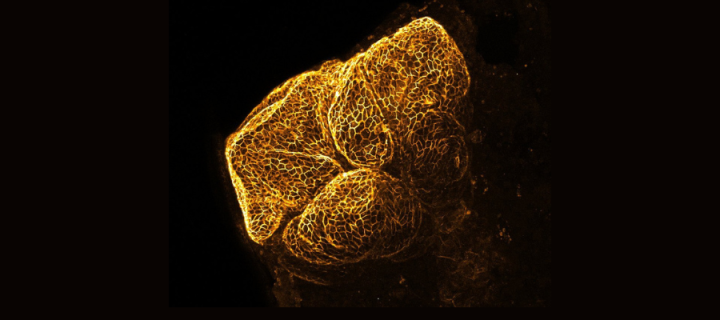New potential treatments for polycystic liver disease
In a Europe-wide research collaboration, groups at the MRC Human Genetics Unit joined forces to investigate the formation of cysts and the development of polycystic liver disease

As well as the kidneys, cysts can form in other organs and the most common place is the liver. 90% of patients with kidney cysts will also have liver cysts (known as polycystic liver disease or PLD). PLD is a life-long condition and patients will often become malnourished as the liver cysts grow and push on their stomachs making them feel full. As well as this, patients with PLD have a high risk of cysts bursting and becoming infected.
At the moment there are no medicines approved to treat PLD and only a few surgical treatments, such as liver resection or liver transplantation, exist, however for the majority of patients this is not an option.
To uncover how PLD forms and to understand whether medicines could be developed to stop PLD, teams from the MRC Human Genetics Unit paired up with colleagues in the Netherlands, Italy and Spain to uncover the process of how liver cysts form.
Most PLD patients had a mutation in a gene called PKD1, which makes a protein that moves to a part of the cell called the primary cilium – a cellular antenna that receives messages from the surrounding cells and tissue.
By bringing together expertise from across the Unit - in the liver at Luke Boulter’s lab and in cilia from Pleasantine Mill’s group - lead author Dr Scott Waddell reasoned that if they can remove this antenna in mouse livers, he would be able to copy the human disease in the lab and map the changes that happen as liver cells form cysts.
What Scott and the team found was that without a functional antenna, primary cilia cells turn on a new way of communicating, known as TGFβ signalling.
This new way of communicating forces the cells to make space for the cyst to grow by producing more of a mesh of proteins known as the extra-cellular matrix which cyst cells grow on. Importantly, using a chemical that blocks TGFβ signals, cysts stop getting bigger by reducing the amount of matrix made.
Crucially, using a potential medicine that stops cyst cells sensing the new matrix, the team could reduce the number of cysts that from in the mouse liver.
Finally, with help from collaborators across Europe, the team from Edinburgh found that these same signals were turned on in livers from patients with PLD and that two new medicines tested in mice have the potential to stop human PLD cells growing in the lab.
While the group has not yet cured PLD, the work published in Science Translational Medicine shows that there are ways to treat this currently “untreatable” disease and that by combining biology and medicine with local and international collaborative efforts this common genetic disease could become treatable.
PLD patients are burdened with a poor quality of life and several health risks. Here, using molecular biology and mouse genetics, we have identified two new ways to treat established PLD, which have the potential to treat disease at point of diagnosis.
Advancing treatment for patients with often neglected genetic diseases requires team science. We were delighted to work with scientists, geneticists and clinicians across Europe to unpick the biology of polycystic disease with the hope of developing new medicines for patients living with this disease.
Related Links
- A TGFβ-ECM-Integrin signalling axis drives structural reconfiguration of the bile duct to promote polycystic liver disease published in Science Translational Medicine
- Luke Boulter Research Group
- Pleasantine Mill Research Group

